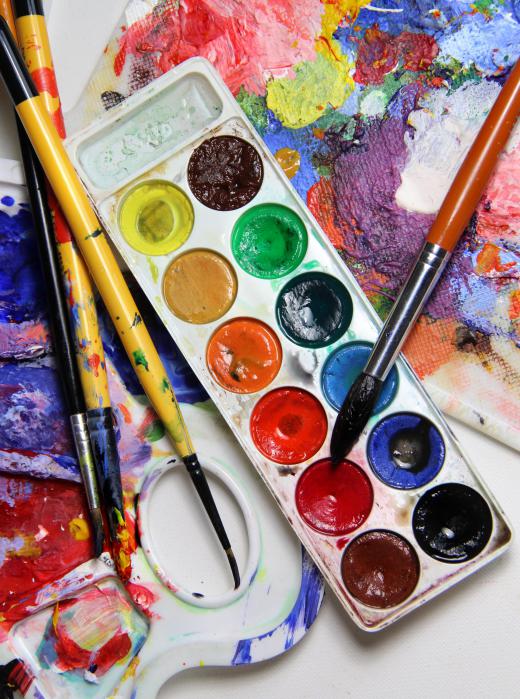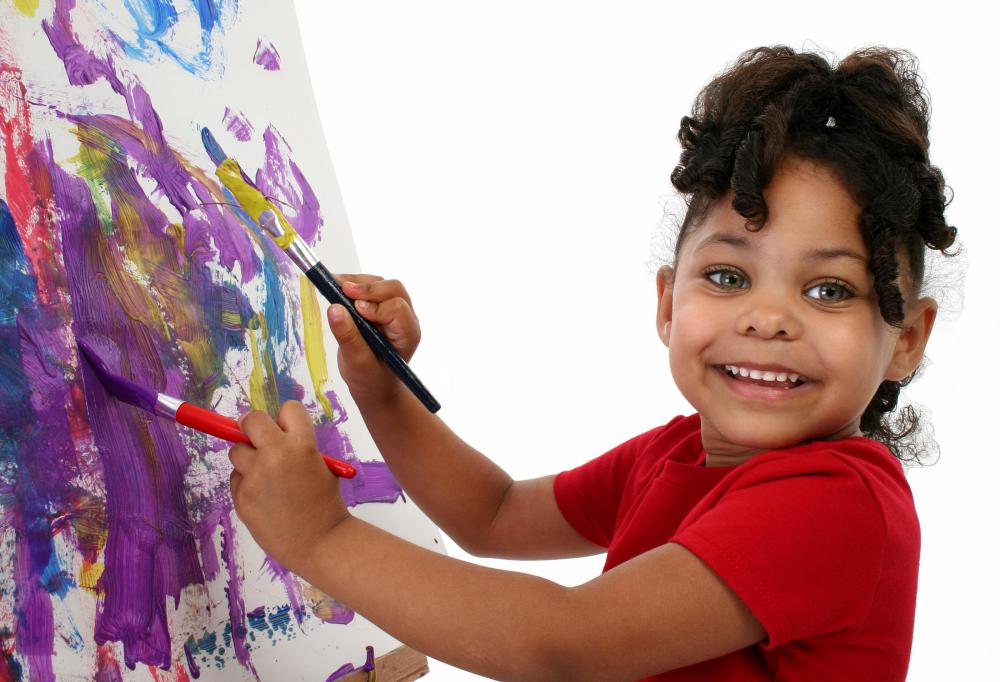At WiseGEEK, we're committed to delivering accurate, trustworthy information. Our expert-authored content is rigorously fact-checked and sourced from credible authorities. Discover how we uphold the highest standards in providing you with reliable knowledge.
What is Art Therapy?
Art therapy is a form of psychotherapy which integrates the visual arts into treatment. Although people began researching the concept in the late 1900s, art therapy became a formal discipline in the 1940s, as a growing number of psychologists and other health care professionals realized that art could have a valuable place in psychiatric treatment. Art therapy is practiced in nations all over the world, under the auspice of organizations such as the American Art Therapy Organization (AATA), and it is relatively easy to locate an art therapist if you are interested in exploring this treatment for yourself.
Humans have have been making art for thousands of years, and the basic tenet of art therapy is that making art is inherently empowering, healing, and cathartic. Art can be used to express a range of emotions, including emotions which may sometimes be difficult for the patient to articulate. By integrating art into a treatment program, an art therapist hopes to elicit more information from the patient while helping the patient to get better.

In addition to being practiced in a private office, art therapy can also be found in hospitals, schools, homeless shelters, and other facilities with vulnerable or emotionally troubled populations. By engaging their patients in the creative process, art therapists often evoke strong emotions and an intense personal analysis on the part of the patient. While the process of making visual art is cathartic, it also creates a visual reward and record for the client, allowing him or her to see or feel the issues being worked on.

An art therapy session may take a number of forms. Generally, the therapist holds a preliminary session to talk with the patient and assess his or her needs. In the art session, the therapist provides appropriate tools and supplies so that patients can work in sculpture, painting, drawing, pastels, charcoal, collage, and so forth. If a patient has an impairment, the art therapist tailors the session to that impairment; for example, people without the use of their hands can work with special tools designed to be held in the mouth or with the feet.

The patient is encouraged to create whatever he or she feels like, or an art therapist may provide an assignment of sorts which the two can discuss at the end of the session. Different art therapists have different approaches; some, for example, may engage in talk therapy while the patient works, while others remain quiet and ask questions or talk when the artist is not at work. Often, the art carries clear visual messages which may be very obvious, but it can also be more subtle, and exploring the subtlety is a crucial part of art therapy.

In many countries, there are clear education requirements which must be fulfilled before someone can offer art therapy. These requirements are usually set by organizations like the AATA, which focus on promoting professional standards for the discipline. Therapists may choose concentrations of art therapy, such as working with children or the disabled, or they may take a more broad approach, depending on personal taste.
AS FEATURED ON:
AS FEATURED ON:














Discussion Comments
I'm learning about therapy and I would like to know more about it.
@browncoat - I would suggest if anyone is interested in art therapy, that they try to do an art therapy course, rather than just do a little bit of it in a counseling session, though.
Part of what makes art therapy a pleasure and a release for people is that there are no controls over how they express themselves. I think if you have to do it within a particular time frame and that time frame is very short, it could definitely block some people.
I also find that in some cases people might dislike being asked to analyze their art. Or they might simply be incapable of it. If you are a teenager drawing a skull and cross bones, it might be because you think it looks tough and cool, not because you are suicidal.
Doing a real course can give you insight into your own condition and why you do what you do as well as giving you the chance to play and get as deep as you like.
@clintflint - It might just be like that at the start of your counseling sessions though. As you get more comfortable and further along in your art therapy intervention, you might end up going deeper.
Or you might always stay on the surface with the art and go deeper in other ways, like through conversation. Everyone is different.
My counselor likes doing a bit of art therapy, although it's not a main focus of our sessions. She just gets me to write down and draw what we're talking about so I have a written reminder to keep of each session. She'll also do things like get me to draw a picture of myself and then we'll talk about it.
I'm kind of in two minds about it. On the one hand, it's nice to have the record, but on the other, I always feel a bit put on the spot.
If it was a real creative arts therapy session, where I was supposed to create an artwork and had time to really think about it, I think I'd like it more. As it is, the stuff that I come up with often seems a bit surfacey, rather than deep. I mean, I'm not worried about how it's perceived, don't get me wrong, I'd just prefer to be getting to the deep stuff in sessions like that.
Post your comments